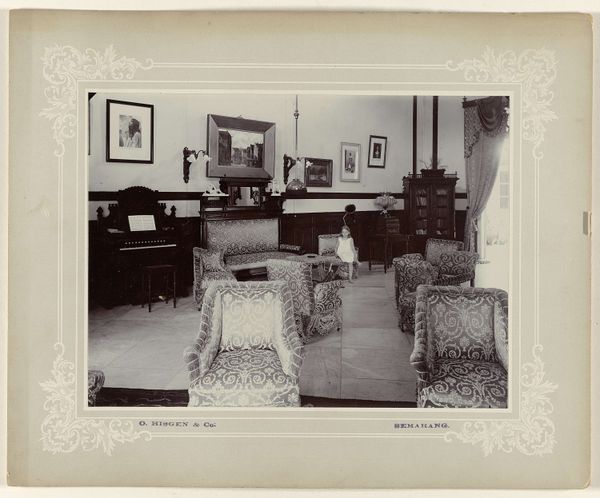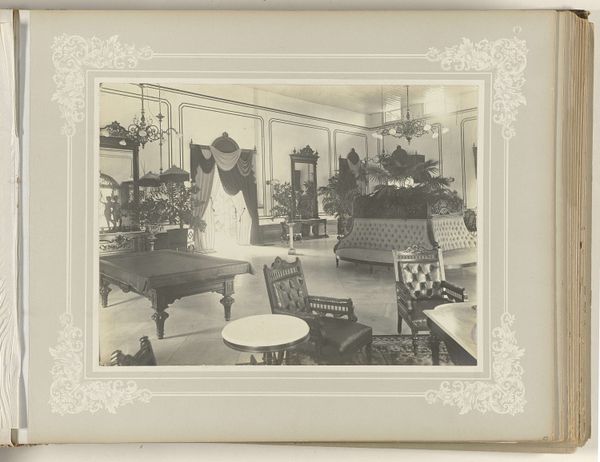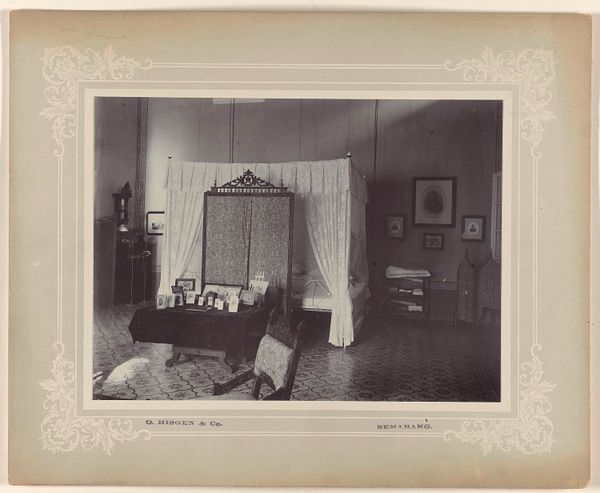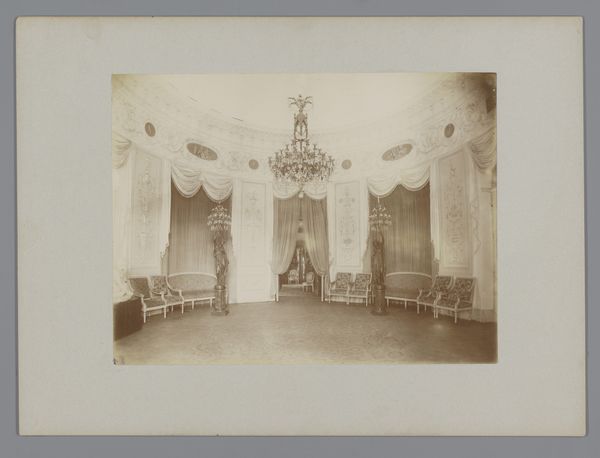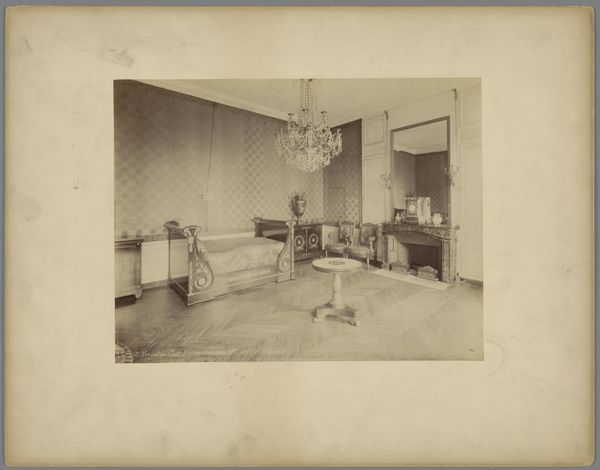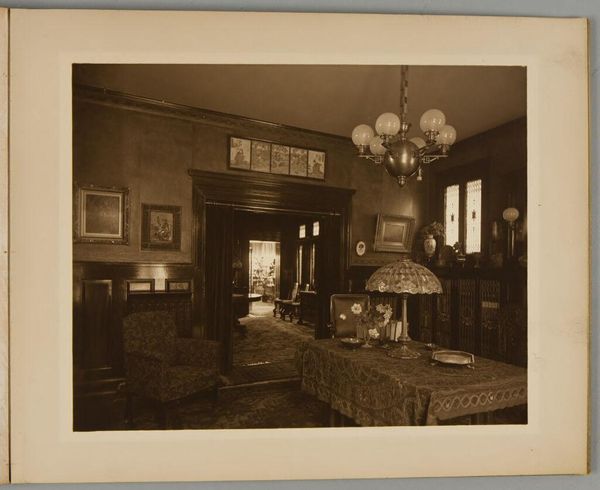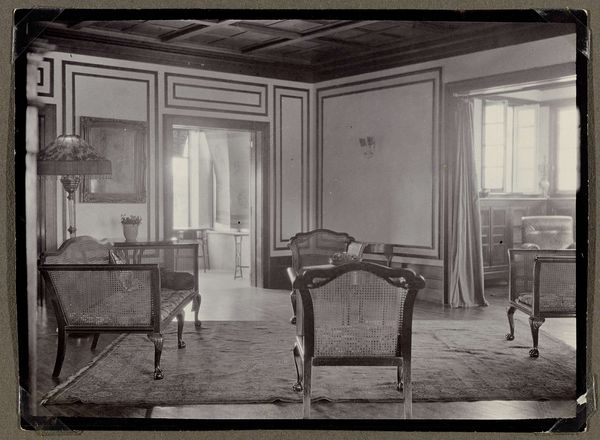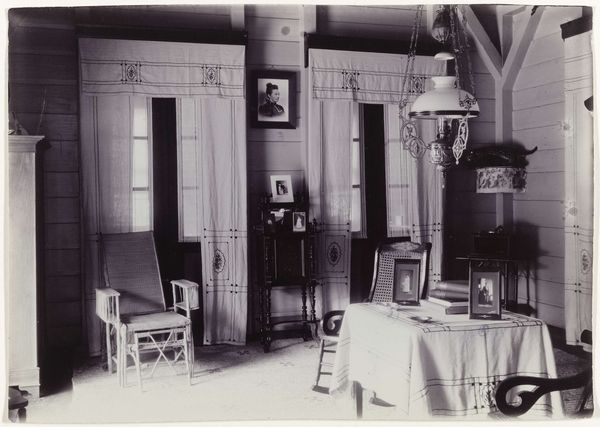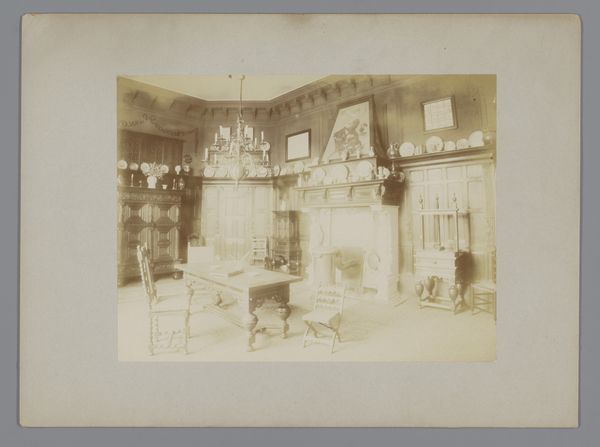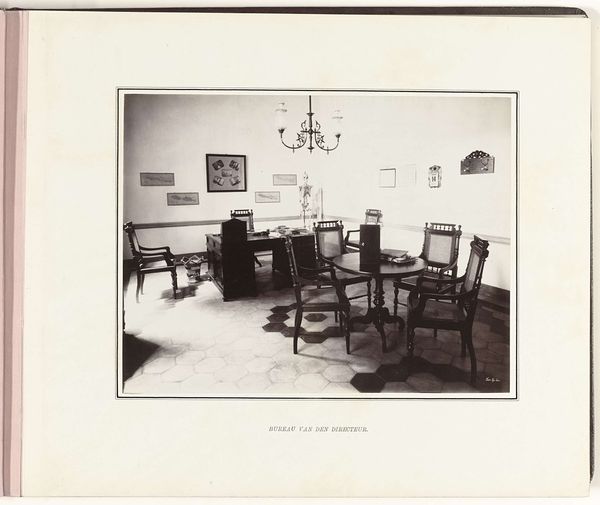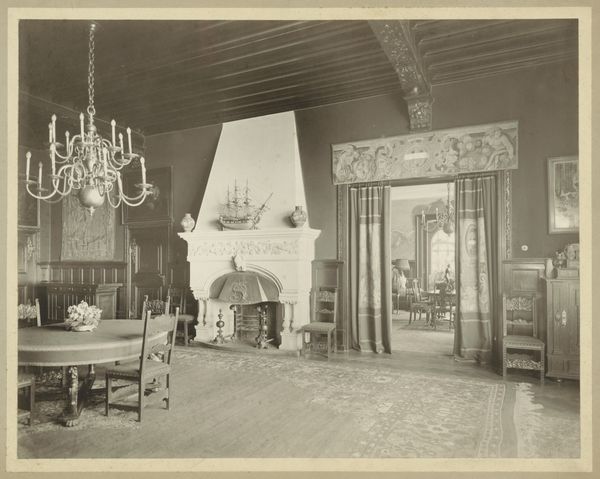
photography
#
still-life
#
photography
#
genre-painting
Dimensions: height 230 mm, width 170 mm
Copyright: Rijks Museum: Open Domain
Editor: So this photograph, "Kamer met fauteuils" taken between 1890 and 1910 by Otto Hisgen, presents what looks like an affluent domestic interior. The room feels quite formal and almost staged. How do you interpret this staged, static setting? Curator: I see this image as a fascinating document reflecting the constructed nature of identity and power in colonial contexts. These carefully arranged interiors weren't merely about aesthetics. It speaks to a performance of social standing in a society marked by stark inequalities. Look at the objects, how the arrangement hints at class aspiration. Do you notice anything about the figures included within the photos on the walls, or in the photo of the child within the room? Editor: I see what you mean. The framed pictures within the photo add another layer. They feel like symbols meant to impress. Could we interpret the sparseness of people, and an abundance of things, to represent the human cost of colonialism? Curator: Precisely. The carefully constructed scene also reminds me of the lack of genuine exchange or mixing with other classes and cultural contexts. The image feels restrictive, like those ornate borders around it. What message does the space send about who belongs and who does not? Editor: It sends a clear one: privilege and exclusion, maintained through constructed social roles and material possessions. Thank you, it definitely shifted how I view this image. I initially only focused on the chairs! Curator: Likewise, it is important to bring it back to the subject within the space itself! Thanks for bringing a fresh perspective.
Comments
No comments
Be the first to comment and join the conversation on the ultimate creative platform.
